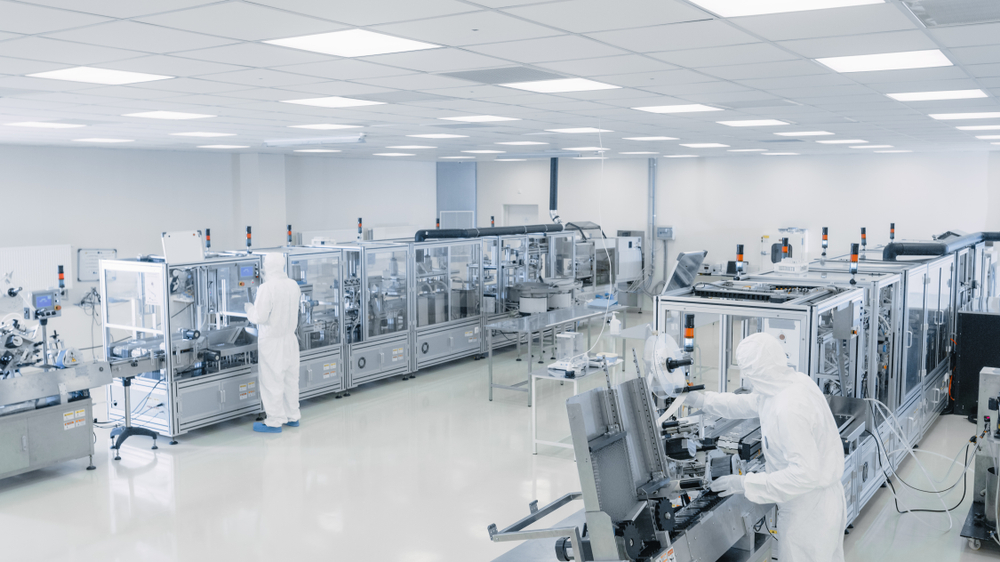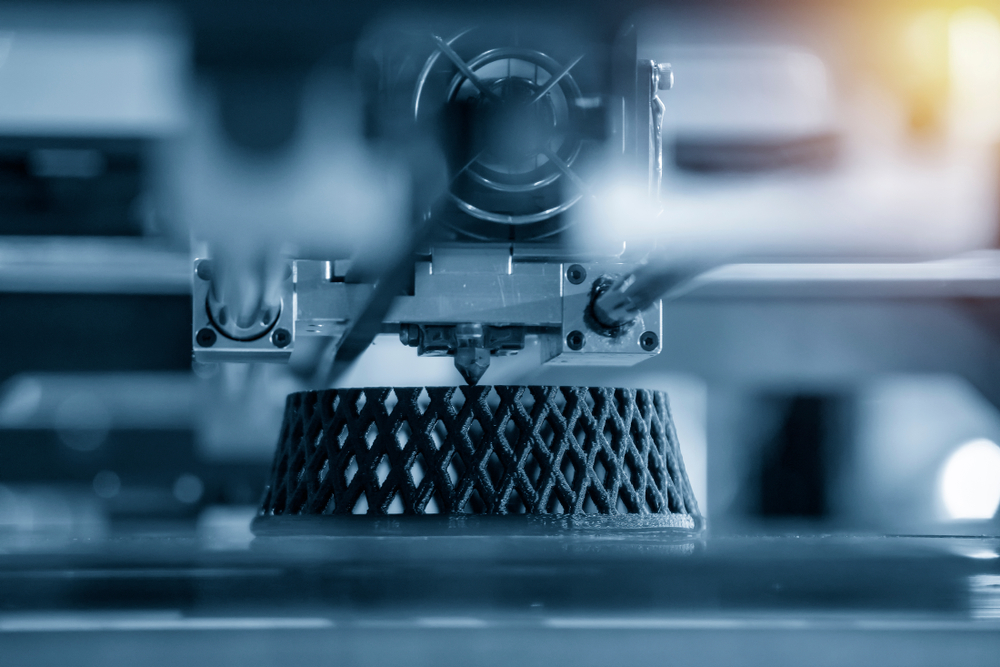Many manufacturers still view 3D printing as a method primarily for prototyping. New additive manufacturing innovations are enabling scaling beyond prototyping stages with production-grade materials, speed, and quality. Advanced 3D printing processes and systems now make high-volume additive manufacturing competitive with low-volume and select high-volume injection molding.
If you need to produce high-volume quantities of simple and very inexpensive products, then 3D printing processes may not provide significant advantages. However, there are many applications of 3D printing where it solves many production pain points felt by manufacturers. Here’s what you need to know about high-volume additive manufacturing and applications where 3D printing can provide the most value.

What is High-Volume Additive Manufacturing?
High-volume additive manufacturing refers to the use of 3D printing systems and processes for production at volumes <1M units. When comparing production volumes, high-volume additive manufacturing is comparable to low-volume injection molding with typical annual production or order size of <1M units. High volume manufacturing processes differ in the required initial capital investment, tooling requirements, and adaptability to different products. The table below provides a comparison of traditional and additive manufacturing operations.
| Traditional manufacturing | High-volume additive manufacturing | |
| Processes | Injection molding, CNC milling, casting, manual assembly | A range of 3D printing processes, e.g., stereolithography (DLP, LCD, SLA), material deposition, direct metal laser sintering, and selective laser sintering |
| Materials | A range of common plastics, ceramics, and metals | Specialized materials, e.g., photosensitive resins, polymers, ceramics, and metal powders |
| Resource requirements | High capital and time investment in production assets and tooling | High capital investment in 3D printing systems, no tooling costs |
| Industry examples/use cases | Ideal for very high-volume (e.g., millions per year) with no expected design changes | Ideal for high mix of similar products, highly customizable products, and complex designs where injection molding can’t be used |
High-volume additive manufacturing can produce a high mix of different products at the same time, whereas injection molding can only produce the same product over and over. Implementing this production approach with injection molding would require multiple production lines, each with custom tooling and carrying a high capital investment. In contrast, 3D printers do not need tooling. High-volume additive manufacturing is advantageous for products that need to be updated frequently, or if you need to produce multiple product SKUs at the same time.
Ideal High-Volume Additive Manufacturing Applications
Traditional manufacturing requires high tooling costs and typically there is a long lead time. A product may go through several test production runs with design iterations before the new product is ready for high volume production. The tooling costs and time, and production iterations make traditional manufacturing suited for very low-mix production of very similar products or single-unit production. The elimination of tooling is the major advantage of 3D printing solutions so that a single 3D printer can produce multiple products. 3D printers let manufacturers be more agile and enable greater design freedom and faster response to market demands.
The best applications for high-volume additive manufacturing are:
1. High-Mix Manufacturing
The real power of high-volume additive manufacturing is the ability to support a high mix of products. By eliminating tooling, a single 3D printing system and the process can produce numerous products, allowing a mix of different products or designs in a batch.
2. Complex Designs
Some designs are simply too complex or costly to be manufactured with injection molding. They may involve excessive assembly steps or material waste, which increases the required capital investment and price for the end customer. 3D printing is flexible, supporting complex designs or simplifying manufacturing through part consolidation.

3. Agile Manufacturing
When a company anticipates changes in the market for their product or wants to produce a range of similar products, 3D printing provides a fast, flexible, and low-risk solution. 3D printing systems do not require retooling when product designs are modified, so a manufacturer can quickly pivot to produce a variation or a new product in response to changes in customer demand, regulatory requirements, or other market dynamics. To mitigate against supply chain disruptions, companies can place 3D printers in multiple locations or leverage local smart factories to produce products for greater manufacturing agility.
4. Personalized Products
Injection molding cannot easily produce personalized and customizable products due to tooling constraints. Manufacturing processes, like CNC machining, involve high material waste, some tooling, and skilled labor – increasing the price and turnaround time for the end customer. At best, the fabrication of personalized products only works on the modular level with traditional processes and requires significant post-processing for complete customization.
With the flexibility to produce a high mix of products, 3D printing can produce partially or fully customized one-off products. With 3D printing, companies can manufacture customized products without the same level of material waste or post-processing steps required in traditional manufacturing. Additive manufacturing is enabling customized products across multiple industries, including consumer (sneakers, eyeglasses), dental (aligners, retainers, night guards, surgical guides, implants), medical devices (braces, medical pillows, orthopedic inserts), and other wearable products.
Transitioning to High-Volume Additive Manufacturing
If you’re planning to manufacture a new product or already manufacturing at scale, there are several benefits to using additive manufacturing for high-volume production. If your company is seeking the expertise to incorporate additive manufacturing into operations, the right 3D printing partner can help guide your selection or implementation of 3D printing solutions, or support your designs as they move from prototyping through full-scale production. An advanced manufacturing partner can also help adapt your designs to take advantage of the benefits of 3D printing and immediately begin production.
When you’re ready to transition to high-volume additive manufacturing, you need to work with a manufacturing partner and processes that are efficient, fast, and help you stay agile. LuxCreo’s advanced 3D printing solutions enable you to get through the product development process and scale production with a single process. You can quickly introduce a new product or adapt an existing product to 3D printing with LuxCreo.
To learn more on how LuxCreo’s Smart Factory can expedite your products from design through production or rapidly scale, please read more here. For more about our processes and services for 3D printing at scale, visit our contact page or call (650) 336-0888.